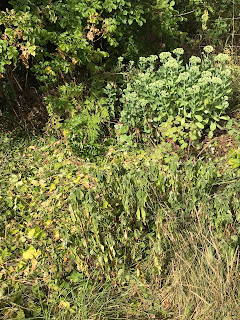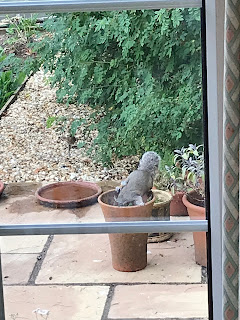Back in the day, November was chilly and December even more so. Taking part in Bonfire Night activities, in early November, meant donning warm clothes and gloves, which were generally de rigeur until about March, or sometimes April. In recent years, winters have been becoming milder, and we’ve got used to plants overwintering with little protection. Some years I’ve left my echeverias outside, their pots moved up against the house wall for shelter. Last winter I left some dahlias in pots on the patio, with no special measures to keep them warm, and they survived.
But then, occasionally, the weather just likes to remind us
that we can’t take things for granted.
December this year has been cold, and last Sunday we woke to about 18cm
(7 inches or so) of snow; there has been no further snowfall, but temperatures
have only occasionally risen above zero Centigrade (and then only by a couple
of degrees) and at night have fallen to -9C at times. The roads have been treacherous, so I’ve been
confined to the village, living (rather comfortably, actually) out of the stores
in the freezer. Yesterday a rapid thaw
started, with rain and significantly warmer weather, and today all the snow has
gone, leaving us with milder but very windy conditions.
 |
| Frosted glass in the porch |
 |
| When icicles hang by the wall ,,, |
The birdlife has been very glad of the cooking apple tree; they've eaten all the apples that were still on the tree, and we’ve taken a few more
out of store for the blackbirds. It has
been too cold to keep putting drinking water out for them; it froze within a
couple of hours.
 |
| The last apple on the tree |
So, what of the plants? The greenhouse temperature has fallen to below -3C, which the dahlias (brought in there to dry off) will not like, and the top growth on the hedychiums is looking decidedly peaky. Last year I dispensed with the greenhouse’s bubblewrap protection over winter, but this year I’m regretting not having taken any steps to protect the more tender plants. Too late now, I suppose, although the meteorologists are hinting darkly at more cold weather to come, so it might still be worth putting the wrap up.
But, despite the past week’s freezing temperatures, life in
the garden still goes on: under the snow, the hellebores have been pushing up
buds …
 |
| Hellebore buds under the old leaves |














































